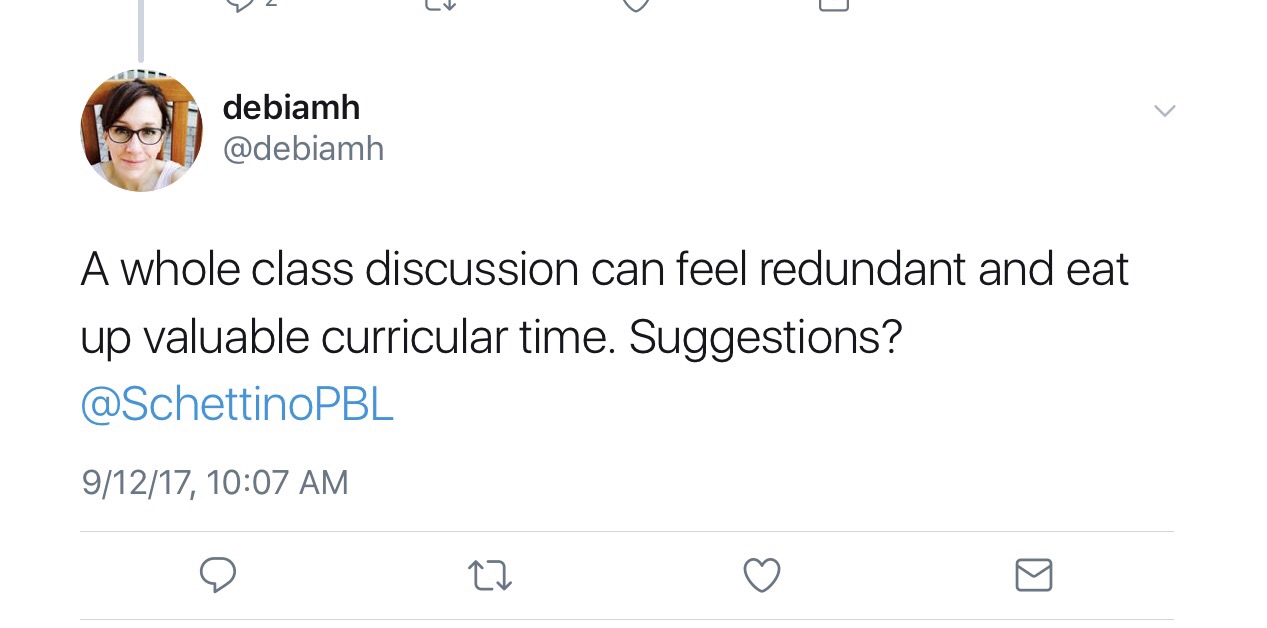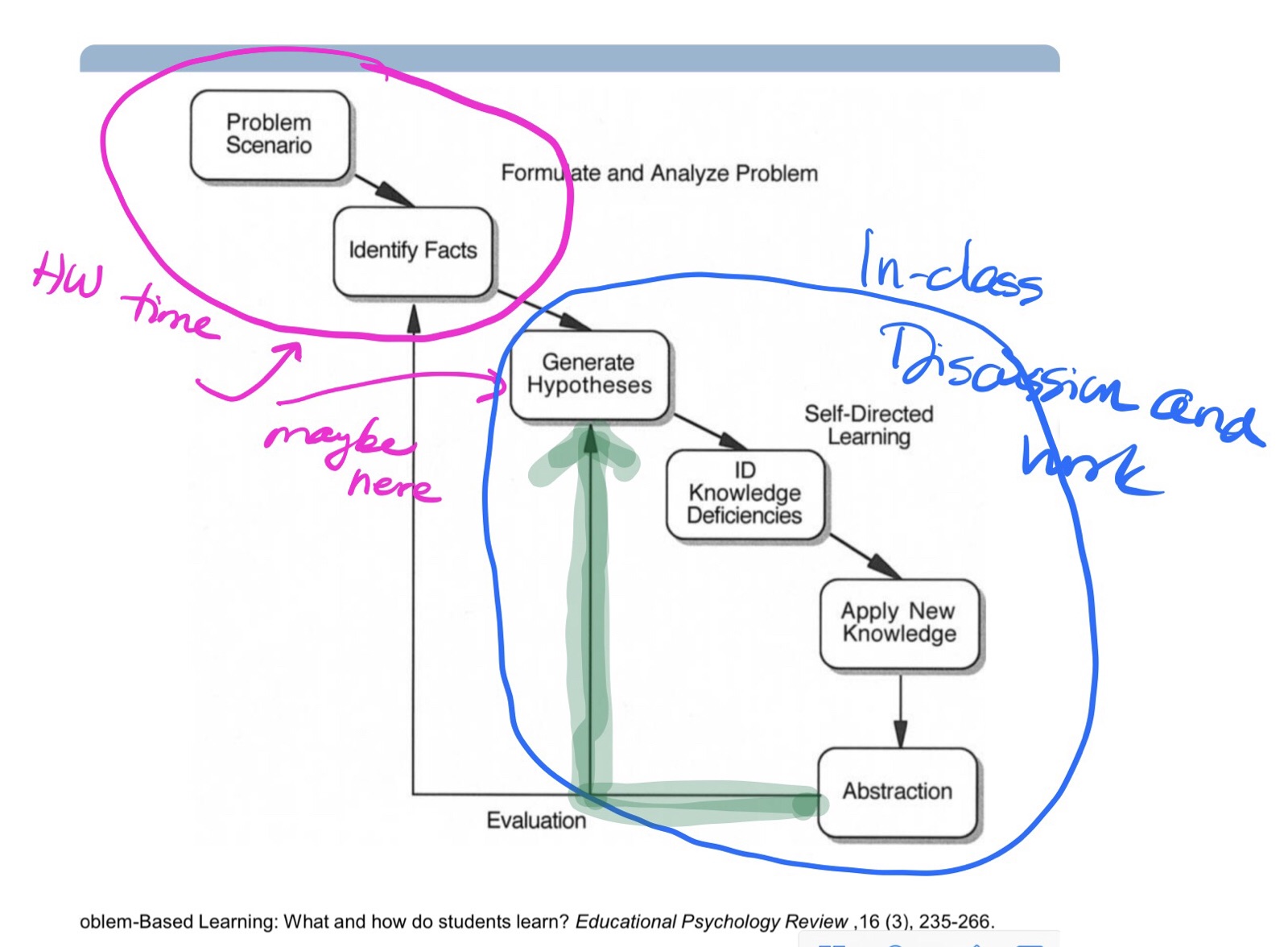I just wanted to respond to a really great question that someone asked on Twitter the other day.

This is a common concern of teachers starting out with the idea of PBL. What does “Class Discussion” mean, first of all? I would agree that discussion does “eat up valuable” time in class on a daily basis, for sure. But what is actually happening in that discussion where something else would be normally happening in the math classroom? What does the discussion replace?
In my mind the discussion itself replaces the lecture, teachers ‘doing of problems” for the kids to then repeat, then kids often sitting on their own or in pairs doing problems that were just like the ones the teacher showed them how to do. The importance of the class discussion (which honestly is the main idea of PBL) is for students to share their ideas of prior knowledge, connections between problems, where they are confused and see where others were not confused and what prior knowledge and experience they brought to the problem.
Here’s a diagram that I use when doing PD work with PBL teachers to help explain all of what is supposed to be happening during class (it’s a lot!)

The student presentations are really just a jumping-off point. It is not just for students to explain “how they did a problem” – as they say – or they think what they’re supposed to do. The steps of Hmelo-Silver’s “process of learning in PBL” diagram that I’ve circled in pink is what students would/should do for homework. However, the part that is circled in blue is actually the learning process that happens in the class discussion – so is this time that has been “eaten up” in class or is it actually a very necessary part of the important learning, reflection and self-regulation of the process that needs to happen?
Is this harder for students? Heck, Yeah. There is so much more focus, listening, questioning and reflection that is needed in order for this process to be successful and productive. But there are ways to make it easier for students and that’s what the “class discussion” time is for. It takes a lot of practice and mastery on the teachers’ part to realize what is needed. Making mathematics discussion productive is a very important part of teaching in PBL and definitely not a part that should be seen as subtle, intuitive or straightforward. There is so much more to this that I can not put in a single blog entry, but it’s definitely worth beginning the discussion. Would love to hear others’ thoughts.
Have you considered just filming a class of yours and sharing the video with your commentary on what went well and what you would’ve done different? People can read and read but just seeing it action can really bring it to life 🙂
I imagine videos of your early classes in a semester would be most valuable as you’re developing the norms and working with students who may not be used to a discussion-based learning classroom quite yet.
Hi Thom,
thanks for this comment (and thanks for reading). I do have videos of classes of mine, both bad and good. However, I don’t feel like I have the ability to post them on my blog or website because they are students and I did not get permission. When I give workshops or do talks, I often use the videos in order for people to see examlples of which I speak. You are right that it’s a very difficult concept to see “in writing.” I think that’s one reason why visitng other schools or teachers is so key to this type of training and teaching!
thanks, Carmel
I have a similar belief. The time invested in a problem-based lesson to start a unit provides a context that helps glue and connect all the rest of the content they will learn. So, rather than just forgetting what they learn, it is more likely to stick around.
The net effect is that this often results in needing less review and intervention so it may either have a minimal, neutral, or possibly time-saving effect due to not having to teach it over again.
Robert,
So sorry not to reply to this comment sooner! Your words are exactly what people need to hear. The more people who have the experience that you are describing here, the more belief there will be in the time that you invest.
Thanks so much!
Carmel